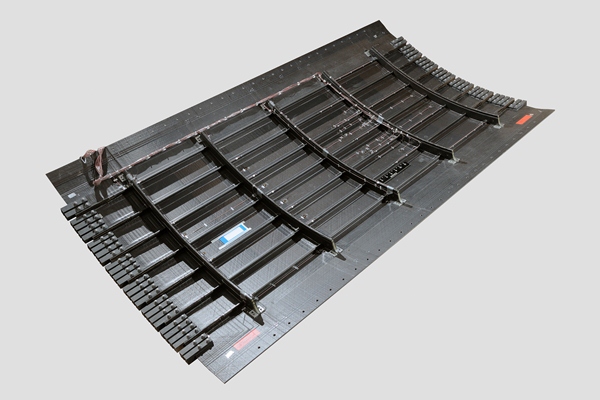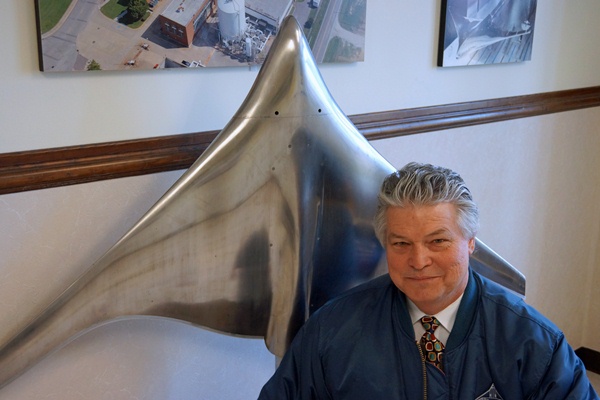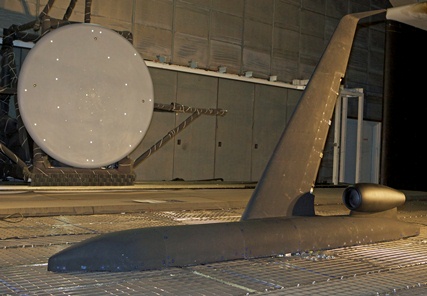NASA has moved into phase two of its Environmentally Responsible Aviation (ERA) project and will carry out eight demonstrations of technologies it hopes to see incorporated into future aircraft designs from 2020 onwards.
While seven of the eight technologies to be tested "will and should have an impact on future 'tube-and-wing'" designs, we will have to wait until 2030 and beyond before we see this configuration changing to incorporate the hybrid wing body portion of the test programme, says NASA's ERA project manager Fay Collier.
The eight technology demonstrations will span five focus areas: aircraft drag reduction; weight reduction through use of advanced composites; fuel and noise reduction through advanced engines; emissions reductions through improved engine combustors; and fuel and noise reduction through aircraft configuration changes. With all eight of its demonstrations, NASA aims to mature the technologies to the point where there would be less risk for aircraft manufacturers to incorporate them into future designs.
To reduce drag, NASA plans to test active flow control technology aimed at improving the performance of the vertical tail so that it can eventually be shrunk to save weight. A full-scale vertical tail has been obtained, on which full-scale windtunnel tests will be carried out, and NASA is in the process of gaining access to a flight testbed with a view to carrying out a full flight test in fiscal year 2015, says Collier.
"The flight testbed will be a large single-aisle aircraft," he adds. "We want to prove that we can carry the active flow concept forward and prove that it works on a real aircraft under realistic conditions." If the active flow concept does work and the air that flows over the tail can be successfully manipulated, a resulting lighter-weight tail could save 1-2% in fuel burn, says Collier.
On the weight reduction front, NASA will test a stitched composite material system that is up to 25% lighter at the component level than currently-used aircraft composite materials. The concept, known as PRSEUS (pultruded rod stitched efficient unified structure), uses blankets of composites which are stitched together, infused using resin, cured and assembled into a larger structure.
 |
|---|
NASA |
Stitched composites reduce weight |
The fact that the material is stitched means that it has the added benefit of built-in damage resistance, says Collier: "If the structure suffers a bird strike and starts to crack, the stitching will arrest the crack development." NASA began "coupon testing" the material six years ago, before working up to larger panels.
"We're now in the middle of building a very large piece of structure that's going to be pressurised," says Collier, adding that this will then be tested at NASA's Langley facility in FY2015. NASA is working with Boeing and the US Air Force research laboratory on this project. Collier believes the new composite material "might be an enabler for alternative configurations to tube-and-wing", although it could also be applied to the existing configuration.
NASA's third demonstration will test a non-rigid, trailing edge wing flap which could be up to 3% lighter than traditional wing flaps. "We've been debating the weight savings - it could be as much as 2-3% lighter, but some think higher," says Collier.
The flexible wing flap, a single structure without hinges that uses morphing technology to adapt to different flight conditions on demand, will be attached to a Gulfstream G3. Flight testing is expected to take place from 2014 into 2015. NASA is working with FlexSys on this project.
Moving on to the propulsion side of the testing programme, NASA plans to work with GE Aviation to design a highly loaded front block compressor aimed at improving the overall performance of the engine to provide a 2-3% reduction in fuel burn. Collier says the design will take place over the next few months, with a view of carrying out a ground rig test between 2014 and 2015. The challenge will be to maintain safe operability over the entire engine envelope, while increasing blade loading and engine performance to reduce fuel burn.
NASA's fifth demonstration will see it working with Pratt & Whitney to further evolve the ultra-high bypass turbofan by improving its efficiency, reducing noise and extending it to larger thrust classes.
"We'll be working to improve the propulsive efficiency of the fan and we'll carry out a series of tests," says Collier, adding that one of the goals will be to "further reduce noise on a product that's already very quiet". To achieve this, NASA and P&W will look into using advanced integrated liners and soft vanes to dampen the acoustics.
 |
|---|
NASA Langley/Kathy Barnstorff |
Collier: the hybrid wing body tests will bear fruit only in the 2030s and beyond |
NASA will also work with P&W on its sixth demonstration, which will test a full ring-shaped engine combustor aimed at simultaneously reducing fuel burn and nitrogen oxide (NOx) emissions. Tests will take place in the 2015 timeframe, with the objective being "to reduce landing and take-off NOx emissions to a goal of 75% below the current standard", says Collier.
Returning to noise reduction, NASA plans to flight test quieter flap and landing gear equipment using a Gulfstream aircraft. "It has been shown that noise from the landing gear and flaps is becoming more important as we see reductions in engine noise," says Collier, adding that landing gear and flap noise could be reduced by 3-5dB under the experiment. Windtunnel tests are underway to trial promising concepts and two or three of those concepts will be chosen in April to be integrated on to the aircraft for flight tests. These flight tests are scheduled to finish in early 2015, says Collier.
Saving the most radical for last, NASA's eighth demonstration will focus on changing the configuration of aircraft to a hybrid wing body design with integrated ultra-high bypass engines, a concept that the agency has been working on since 1990. The demonstration will use a large-scale windtunnel model and turbine-powered simulators to study how airflow around the aircraft itself influences the airflow into the engine. Testing is due to be completed in 2015.
While such changes to the configuration of aircraft are expected to significantly reduce community noise and provide the most significant reduction in fuel consumption - about 15%, rising to 50% if all of the other fuel-saving technologies are incorporated - the hybrid wing body concept is the least likely of the eight demonstrations to come to fruition any time soon.
"Between now and 2025 we will see improvements in current tube-and-wing designs but there is nothing on the horizon to suggest that this configuration will change near-term," says Collier, adding that it will be into the 2030s and beyond before we see "something new in the passenger carrying realm".
 |
|---|
NASA Langley/Sean Smith |
A semi-span 18% jet model was tested to evaluate flap and landing gear noise-reduction technologies |
NASA chose the eight technologies to be demonstrated from a total of 22 different ideas, which it studied over a six-month period. The idea was "to maintain a balanced approach on noise, fuel burn and NOx", says Collier. The chosen eight represent "a balanced portfolio that allows very significant progress on reducing oxides of nitrogen, weight and drag, and improving fuel efficiency".
As for what happens next, Collier is leaving that in the hands of the aviation industry: "Our job is to finish the demonstrations in the three-year window that we have, publish the results and then let the industry decide how to integrate them into future designs."
Source: Flight International




















